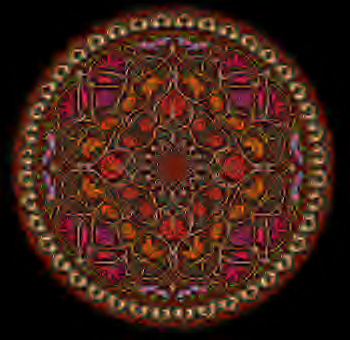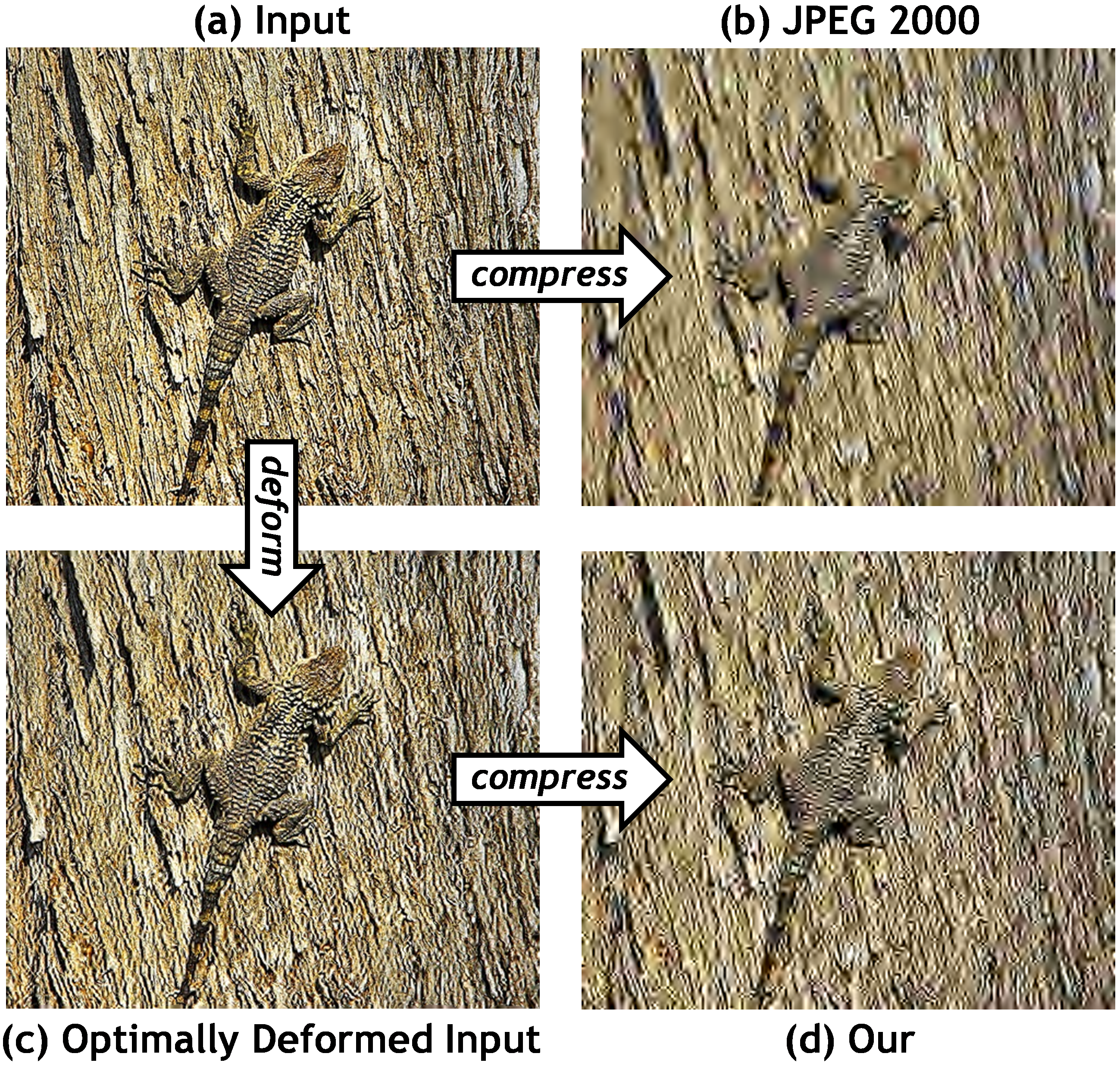Deformation Aware Image Compression
CVPR 2018
Tamar Rott Shaham
Tomer Michaeli
Technion
- Israel Institute of Technology
|
|
|
Our algorithm seeks to minimize a deformation-insensitive error measure. This boils down to determining how to best deform the input image (a) so as to make it more compressible (c). By doing so, we trade a little geometric integrity with a significant gain in terms of preservation of visual information (d) compared to regular compression (b). Note that images (b) and (d) were obtained by compressing images (a) and (c), respectively, with the same JPEG 2000 CODEC using the same compression ratio of 150:1. |
Abstract
Lossy compression algorithms aim to compactly encode
images in a way which enables to restore them with minimal
error. We show that a key limitation of existing algorithms
is that they rely on error measures that are extremely sensitive
to geometric deformations (e.g. SSD, SSIM). These
force the encoder to invest many bits in describing the exact
geometry of every fine detail in the image, which is obviously
wasteful, because the human visual system is indifferent
to small local translations. Motivated by this observation,
we propose a deformation-insensitive error measure
that can be easily incorporated into any existing compression
scheme. As we show, optimal compression under our
criterion involves slightly deforming the input image such
that it becomes more “compressible”. Surprisingly, while
these small deformations are barely noticeable, they enable
the CODEC to preserve details that are otherwise completely
lost. Our technique uses the CODEC as a “black
box”, thus allowing simple integration with arbitrary compression
methods. Extensive experiments, including user
studies, confirm that our approach significantly improves
the visual quality of many CODECs. These include JPEG,
JPEG 2000, WebP, BPG, and a recent deep-net method. denoising experiments. These validate that the structures
we reveal as ‘optimal’ for a specific prior are indeed better denoised by this prior.
Downloads
|
|
|
|
|
User Study
To quantify the perceptual effect of our approach, we conducted a user study on the Kodak dataset.
For each of the 24 uncompressed images in this dataset, the participants were asked to choose which of its two compressed
versions looks better: the one with regular compression
(with JPEG or JPEG 2000) or our deformation aware
variant of the same compression method.
Both surveys indicate that our deformation aware framework indeed leads to a meaningful improvement in visual quality over the original compression methods (see more details in the paper).
Take the JPEG Survey
Results
Input Compressed image 

Input Compressed image 

Input Compressed image 

Input Compressed image 

Input Compressed image 

Results
[JPEG 2000] A. Skodras, C. Christopoulos, and T. Ebrahimi, "The JPEG 2000 still image compression standard," IEEE Signal processing magazine.
[JPEG] G. K.Wallace, "The JPEG still picture compression standard," IEEE transactions on consumer electronics.
[Global Thresholding] G. Strang and T. Nguyen, "Wavelets and filter banks", SIAM, 1996.
[BPG] F. Bellard, "BPG image format," 2014. Webpage
[WebP] "WebP: A New Image Format For The Web.," 2015. Webpage
[Toderici et al.] G. Toderici, D. Vincent, N. Johnston, S. J. Hwang, D. Minnen, J. Shor, and M. Covell, "Full resolution image compression with recurrent neural networks," CVPR 2017.
[Kodak dataset] R. Franzen, "Kodak lossless true color image suite," 1999. Webpage
